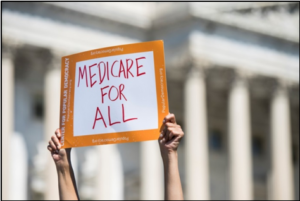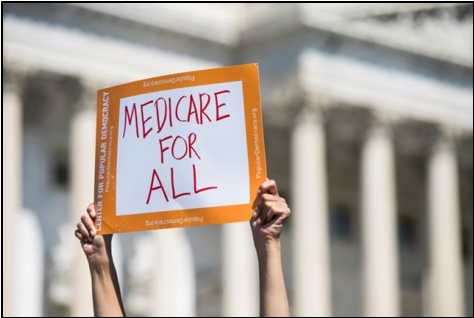Christina Farr | CNBC.com
Jan 16, 2019
Apple is in talks with private Medicare plans about getting Apple Watches into the hands — or on the wrists — of millions of people over the age of 65.

It makes a lot of sense for Apple to do that, health experts tell CNBC, since it could prevent pricey doctor or hospital visits.
Apple has previously signed a deal with insurance giants Aetna and United Healthcare about subsidizing the cost of the watch.
Apple has been in talks with at least three private Medicare plans about subsidizing the Apple Watch for people over 65 to use as a health tracker, according to people familiar with the discussions.
The insurers are exploring ways to subsidize the cost of the device for those who can’t afford the $279 price tag, which is the starting cost of an older model. The latest version of the device, which includes the most extensive health features including fall detection and an electrocardiogram to measure the heart’s rhythm, retails for a minimum of $399, which many seniors could benefit from but can’t afford.
The talks have not resulted in any official deals just yet, the people said. Apple has paid a visit to several of the largest insurers in the market, as well as some smaller, venture-backed Medicare Advantage plans. The people involved declined to be named as the discussions are still private.
Health experts say that seniors are an ideal market for the Apple Watch, which has introduced features that can be used by anyone, but are most beneficial to seniors, including fall detection and cardiac arrhythmia monitoring. It also makes sense as a business model for insurers, as seniors are a particularly lucrative market.
“It’s the segment of health insurance with the highest dollar revenue and margin per member,” explains Augustin Ruta, a health insurance consultant at A2 Strategy Group. Ruta also noted that Medicare members enrolled in these private plans tend to have lower churn rates, which gives insurers more of an incentive to invest in members’ long-term health outcomes.
About 22 million seniors, and growing, are now enrolled in a Medicare Advantage plan, which are private health plans that receive government payouts for providing services to seniors — about $10,000 per member, on average. Consulting firm PricewaterhouseCoopers, expects the Medicare Advantage market to generate more than $350 billion in annual revenue by 2020, although the market is regulated to limit insurers’ profits.
The government payments provide more flexibility for insurers running Medicare Advantage plans to invest in new technologies, like the Apple Watch, if they have a demonstrated benefit.
Apple Watch might be pricier than other trackers, such as the Fitbit, but insurance executives say they’d work with Apple if the company can show that it helps its members detect potentially serious health problems before they require an expensive intervention.
“Avoiding one emergency room visit would more than pay for the device,” said Bob Sheehy, CEO of Bright Health, an insurance start-up with a Medicare Advantage plan, and the former CEO of United Healthcare.
Apple is increasingly invested in this kind of research, such as its heart study with Stanford University and its partnership with Zimmer Biomet to better understand through the Apple Watch how patients can more quickly recover from knee and hip replacement procedures.
The latest Apple Watch now includes an electrocardiogram, which is designed to pick up on atrial fibrillation, a condition that impacts far more people over the age of 65 than their younger counterparts, and puts them at a higher risk for stroke and other potentially fatal health outcomes. While Apple Watch doesn’t diagnose disease or replace a doctor, the company is positioning it as an “intelligent health guardian.”
Apple CEO Tim Cook told CNBC in an interview last week that health technology would be a major initiative for the company in the future.
“We are taking what has been with the institution and empowering the individual to manage their health. And we’re just at the front end of this,” Cook said. “But I do think, looking back, in the future, you will answer that question: Apple’s most important contribution to mankind has been in health.”
Apple’s health team is also looking to work with other large insurers outside of Medicare. It signed a deal with Aetna in August of last year; and in November 2018, it integrated with United Healthcare for a program that rewards those who walk at least 10,000 steps per day to subsidize the cost of a watch. It is also working with life insurer John Hancock to offer a steeply discounted watch to those who live healthy lifestyles.
At ‘Greg Says’ we believe this is a trend that has legs because everybody wins – Apple, the insurer, and the consumer.








